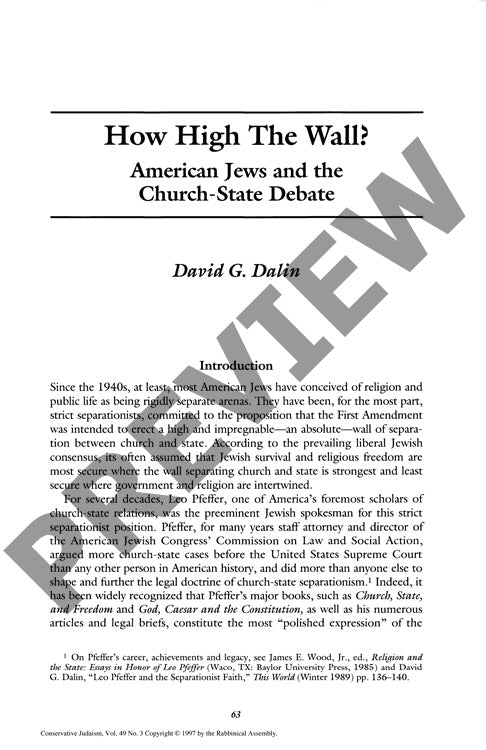How High the Wall American Jews and The
Couldn't load pickup availability
American Jewish views on church-state separation have undergone a dramatic transformation since the 1940s, shifting from near-unanimous support for strict separationism to increasingly diverse positions by the 1990s. Through analysis of legal cases, organizational policies, and intellectual discourse, this research traces how the once-dominant separationist paradigm, championed by influential legal advocate Leo Pfeffer, gradually fractured amid changing communal needs and priorities. Key Supreme Court cases including *Everson v. Board of Education*, *McCollum v. Board of Education*, and *Lee v. Weisman* serve as critical waypoints in this evolution, while Jewish intellectuals like Will Herberg, Milton Himmelfarb, and Irving Kristol mounted influential theoretical challenges to separationist orthodoxy. Several factors drove this ideological realignment: the proliferation of Jewish day schools created new support for parochial school aid, cases like *Goldman v. Weinberger* raised concerns about strict separation impinging on religious practice, and controversies over public religious displays such as Chabad menorahs forced reconsideration of traditional positions. Orthodox communities increasingly led advocacy for religious accommodation while maintaining opposition to Christian dominance. The findings reveal how American Jewish perspectives on church-state issues have become markedly more pluralistic, reflecting diverse institutional interests and theological views - a fundamental shift in how American Jews conceptualize religious freedom in a plural democracy.

More Information
-
Physical Description
-
Publication Information
Published
ISBN
-
Publication Credits
David Dalin

